#Enhanced interdisciplinary teamwork
Text
Contributions of New Nurses: Fostering Growth and Collaboration
As the healthcare landscape evolves, the arrival of new nurses into the profession brings a wave of fresh perspectives, energy, and innovation to the team. However, despite their immense potential, new nurses are often met with skepticism and resistance. In this blog post, we delve into the essential contributions that new nurses bring to the healthcare team and explore why it is crucial to…

View On WordPress
#Adaptable mindset#Collaborative spirit#Continuity of care#Cultural diversity#Current evidence-based knowledge#Eagerness to learn#Eagerness to learn Patient-centered care Enhanced interdisciplinary teamwork Cultural diversity Fresh ideas Improved communication Positive#Enhanced interdisciplinary teamwork#Enhanced patient outcomes#Enthusiasm#Fresh ideas#Improved communication#Increased job satisfaction#innovation#Mentorship opportunities#New perspectives#patient-centered care#Positive work environment#Professional growth#Succession planning#Technological proficiency
0 notes
Text
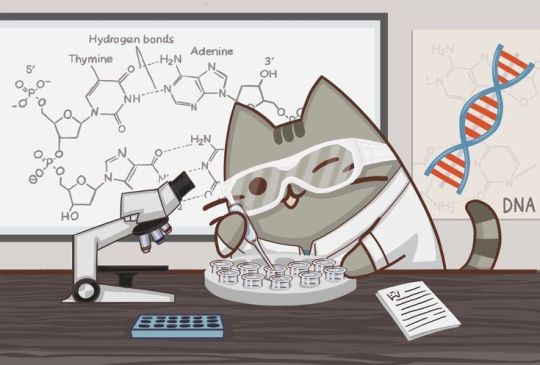
Benefits of STEM Education
STEM education fosters a spirit of innovation, encouraging students to think outside the box and develop unique ideas by taking an interdisciplinary approach to problem-solving. By prioritizing collaboration and teamwork, STEM education equips students with the skills to effectively work in teams, promoting communication, leadership, and the pursuit of common goals. STEM subjects enhance cognitive abilities, such as thinking, reading, and learning, by challenging students to engage in analytical thinking, coding, and engineering principles from an early age, promoting problem-solving proficiency. STEM education supports the development of social-emotional skills, such as self-awareness, empathy, and responsible decision-making, ensuring students’ holistic growth and preparing them to thrive in a rapidly changing world (Turner, 2015).
CHOOSE STEM!
Image By: Kelly Stanford (@[email protected])
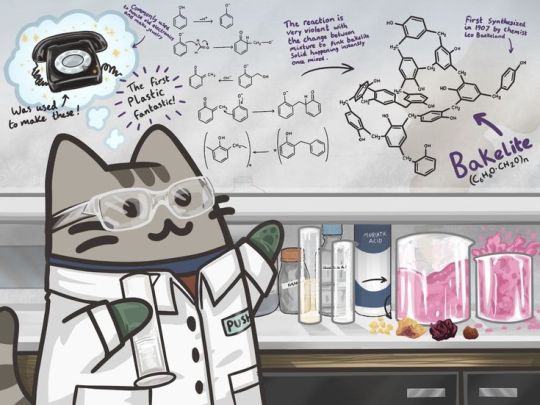
19 notes
·
View notes
Text
Getting Started with Full-Stack Web Development: Obstacles and Opportunities
Embarking on the journey to becoming a full-stack web developer offers a blend of exhilarating challenges and rewarding accomplishments. In this guide, we'll explore the intricacies of mastering full-stack development, delving into the obstacles you may face along the way and the triumphs that await those who persevere.

Introduction
Mastering full-stack web development is akin to embarking on a thrilling adventure—one that promises countless opportunities for growth, innovation, and professional fulfillment. However, the road to proficiency is not without its hurdles. In this blog, we'll navigate through the challenges aspiring full-stack developers may encounter, as well as the triumphs that come with overcoming them.
1. Diverse Skill Set
Full-stack web development demands proficiency in a diverse range of skills, spanning from frontend technologies like HTML, CSS, and JavaScript to backend languages such as Python, Ruby, or Node.js. Additionally, expertise in databases, server management, and deployment processes is crucial. Acquiring mastery in these areas requires dedication, time, and a continuous commitment to learning and adaptation.
2. Ever-Evolving Landscape
The realm of web development is in a perpetual state of evolution, with new frameworks, libraries, and tools emerging at a rapid pace. Keeping pace with these advancements and constantly updating your skill set is imperative to remain competitive in the industry. Allocate time to explore emerging technologies, enroll in online courses, and engage with the developer community to stay ahead of the curve.
3. Complexity of Projects
Full-stack developers often tackle intricate projects that necessitate the integration of various technologies and components. Managing the intricacies of these projects, troubleshooting issues, and ensuring seamless interaction between frontend and backend systems can be daunting. Nonetheless, overcoming these challenges cultivates invaluable problem-solving skills and deepens your comprehension of web development principles.
4. In-Depth Understanding
To excel as a full-stack developer, a profound understanding of programming concepts, algorithms, and data structures is indispensable. Mastery of these foundational principles empowers you to write concise, efficient code and tackle complex technical challenges with confidence. Dedicate time to delve into computer science fundamentals and engage in coding exercises to fortify your expertise.
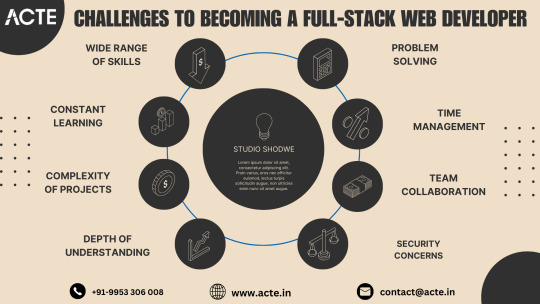
5. Effective Problem Solving
Effective problem-solving is a hallmark of successful full-stack developers. Debugging code, identifying bottlenecks, and optimizing performance demand astute analytical skills and a systematic approach. Collaborating with peers, leveraging online resources, and seeking mentorship can facilitate the navigation of complex technical hurdles and yield effective solutions.
6. Strategic Time Management
Balancing multiple responsibilities, including frontend and backend development, database management, and project deployment, necessitates adept time management skills. Prioritize tasks, establish realistic timelines, and leverage productivity tools to streamline your workflow and maximize productivity. Reserve time for ongoing learning and professional development to continually enhance your skill set.
7. Cultivating Team Collaboration
Full-stack developers often collaborate with interdisciplinary teams, comprising designers, frontend developers, backend developers, and other stakeholders. Effective communication, teamwork, and collaboration are vital for project success. Foster strong interpersonal relationships, actively contribute in team settings, and cultivate a culture of open communication and collaboration within your team.
8. Prioritizing Security
Understanding security best practices and implementing robust security measures is paramount in web development. Full-stack developers must remain vigilant in identifying and mitigating security vulnerabilities to safeguard sensitive data and uphold the integrity of web applications. Stay informed about prevalent security threats, adhere to industry best practices, and consistently update your knowledge to proactively address emerging risks.
Conclusion
Embarking on the journey to becoming a full-stack web developer is a thrilling endeavor marked by challenges and triumphs. By embracing the obstacles, refining your skills, and maintaining a steadfast commitment to learning and growth, you can unlock a realm of opportunities and embark on a gratifying career in web development. Remember, each challenge surmounted brings you closer to mastery, and the journey itself is as enriching as the destination.
#full stack developer#education#information#full stack web development#web development#front end development#full stack developer course#technology#backend
2 notes
·
View notes
Text
𝗣𝗿𝗼𝗷𝗲𝗰𝘁-𝗯𝗮𝘀𝗲𝗱 𝗹𝗲𝗮𝗿𝗻𝗶𝗻𝗴
Project-based learning (PBL) is an educational approach that focuses on students actively engaging in real-world, authentic projects to develop and demonstrate their knowledge and skills. It is a student-centered methodology that promotes deep learning, critical thinking, collaboration, and problem-solving abilities.
In project-based learning, students work on a project or a series of interconnected projects that revolve around a central driving question or problem. This question or problem serves as the foundation for the project and guides students' learning throughout the process. The projects are often interdisciplinary and allow students to apply knowledge from various subject areas, making connections and seeing the relevance of what they learn.
Here's a breakdown of the key elements of project-based learning:
1. Real-world relevance: Projects in PBL are designed to reflect real-world scenarios or issues, making the learning experience more authentic and meaningful for students. By tackling real problems or questions, students can see the practical applications of their learning.
2. Student autonomy: PBL encourages students to take ownership of their learning. They have the freedom to make decisions, set goals, and plan their project, giving them a sense of autonomy and responsibility.
3. Inquiry and research: Students engage in inquiry-based learning, where they investigate and research the project topic to gain a deeper understanding. They ask questions, seek information, and explore different perspectives to develop their knowledge.
4. Collaboration: PBL often involves collaboration among students. They work in teams or groups to complete the project, fostering communication, teamwork, and social skills. Collaboration allows students to learn from and with each other, promoting a supportive learning environment.
5. Problem-solving and critical thinking: PBL emphasizes problem-solving skills and critical thinking. As students encounter challenges and obstacles during their project, they learn to analyze problems, develop strategies, and think critically to find solutions.
6. Authentic assessment: In PBL, assessment is focused on the students' final project and its outcomes. Students demonstrate their learning through presentations, reports, prototypes, or other tangible artifacts that showcase their knowledge, skills, and understanding of the project.
Benefits of project-based learning include increased student engagement, improved retention of knowledge, development of practical skills, and enhanced ability to apply knowledge in real-world contexts. It also nurtures creativity, curiosity, and a lifelong love of learning.
TalentServe
#projectmanagement #benefits #development #learning #students #teachers #research #educational #experience #environment #blogs
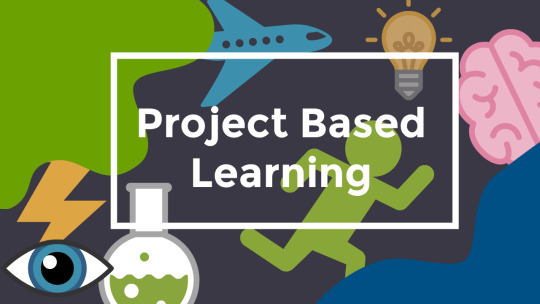
2 notes
·
View notes
Text
Education in music plays a crucial part in fostering creativity.
Music has long been recognized as a powerful medium that transcends cultural boundaries and speaks to the human soul. Beyond its aesthetic appeal and entertainment value, music possesses the unique ability to stimulate creativity and foster intellectual development. In this article, we delve into the crucial role of music education in nurturing creativity and its profound impact on the overall development of individuals.
Fostering Creative Expression
Music education encompasses various aspects, including theory, technique, performance, and composition. By providing students with a solid foundation in these areas, music education acts as a catalyst for unlocking their creative potential. Learning to play an instrument, sing, or compose music requires students to think outside the box, explore new ideas, and experiment with different sounds and melodies. This process not only develops technical skills but also cultivates imaginative thinking.
Enhancing Cognitive Abilities
Engaging in music education has been shown to enhance cognitive abilities, including memory, problem-solving, and critical thinking. Playing an instrument or participating in group performances requires musicians to memorize complex musical pieces, recognize patterns, and interpret musical scores. These activities stimulate neural connections and strengthen memory recall. Moreover, the process of learning music theory and analyzing compositions fosters analytical thinking and problem-solving skills.
Emotional Intelligence and Empathy
Music has the power to evoke a wide range of emotions, and music education provides students with a platform to explore and express their own emotions. Through music, students can learn to recognize and understand different emotional states, both in themselves and in others. This development of emotional intelligence nurtures empathy, allowing students to connect with and understand the emotions and experiences of others. Such empathetic understanding is crucial for developing well-rounded individuals who can appreciate diverse perspectives and collaborate effectively in various contexts.
Collaboration and Teamwork
Music education often involves ensemble performances, choirs, or bands, requiring students to collaborate and work as a team. In these settings, students learn to listen to one another, synchronize their playing or singing, and respond to cues from their fellow musicians. By participating in group performances, students develop essential skills such as active listening, communication, compromise, and coordination. These skills are transferable to various domains of life, fostering teamwork and collaboration in academic, professional, and personal settings.
Imagination and Innovation
Music education encourages students to explore their imagination and think innovatively. Composing music allows individuals to experiment with different melodies, harmonies, and rhythms, fostering their ability to think creatively and invent new musical ideas. Moreover, music education often involves improvisation, where students are encouraged to think on their feet and create music in the moment. These activities cultivate a mindset of exploration, adaptability, and innovation, skills that are invaluable in the modern world.
Cross-Disciplinary Connections
Music education creates cross-disciplinary connections, bridging various subjects and expanding students' intellectual horizons. For instance, studying music can involve learning about historical periods, cultural traditions, and societal influences that have shaped different musical styles. Additionally, the mathematical principles of rhythm and notation, as well as the physics of sound, are integrated into music education. These connections broaden students' knowledge base and encourage interdisciplinary thinking.
Music education plays a vital role in the development of creativity, encompassing cognitive, emotional, and social aspects. By engaging with music, students enhance their creative expression, cognitive abilities, emotional intelligence, and collaboration skills. Music education fosters imagination, innovation, and interdisciplinary connections, preparing students for success in various domains of life. As we recognize the significant impact of music on creativity, it becomes crucial to prioritize and integrate music education into the curriculum, ensuring that every student has the opportunity to experience the transformative power of music.
2 notes
·
View notes
Text
DEVELOPING 21ST-CENTURY SKILLS - A Blueprint for Future-Ready Students
In today’s fast-paced world, preparing students with 21st-century skills is essential for their future success. The skills critical thinking, creativity, collaboration, communication, technological literacy and global awareness are crucial for navigating modern challenges and opportunities.
🔘Critical Thinking involves analyzing information and solving problems creatively. Encourage inquiry-based learning to develop this ability.
🔘Creativity is about innovative thinking and problem-solving. Foster it through interdisciplinary projects and a culture of curiosity.
🔘Collaboration is the key in a connected world. Promote teamwork through group projects and peer learning.
🔘Communication skills are fundamental. Focus on enhancing students’ written, verbal, and digital communication abilities.
🔘Technological Literacy is vital as technology transforms industries. Integrate digital tools into the curriculum and teach digital citizenship.
🔘Global Awareness helps students appreciate diverse cultures and perspectives. Encourage multicultural education and international collaborations.
To cultivate these skills, educators must adopt innovative teaching strategies and create an engaging learning environment. Project-based learning, experiential education and the integration of technology are powerful approaches. Moreover, fostering a growth mindset where students view challenges as opportunities for learning is pivotal.
In conclusion, developing 21st century skills is about preparing students for a dynamic and uncertain future. By focusing on critical thinking, creativity, collaboration, communication, technological literacy and global awareness, educators can create a blueprint for future-ready students. This holistic approach not only enhances academic performance but also equips students with the skills needed to thrive in the ever changing landscape of the 21st century.
(The writer is, Durga K, Principal, The Quest International School)
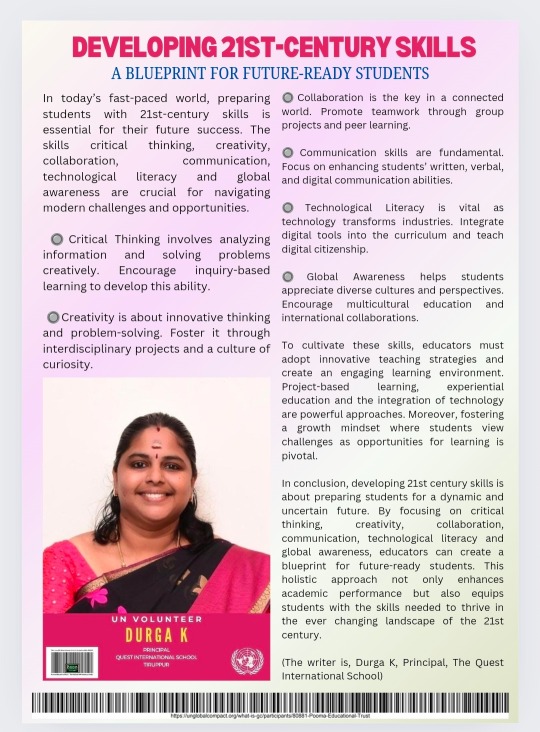
0 notes
Text
The Role of Interior Designers in Sustainable Building Projects

As the world increasingly focuses on sustainability, the role of interior designers in promoting and implementing eco-friendly practices has become more crucial than ever. Interior designers are uniquely positioned to influence the sustainability of building projects by making informed decisions about materials, design practices, and overall project management. This blog will explore the multifaceted role of interior designers in sustainable building projects and highlight how the Indian Institute of Fashion & Design - IIFD Kolkata prepares its students to lead in this vital area.
Understanding Sustainable Design
Sustainable design aims to reduce negative impacts on the environment, enhance the health and comfort of building occupants, and improve building performance. It involves considering the full life cycle of materials, energy efficiency, and the social and environmental impacts of design decisions. Interior designers play a pivotal role in achieving these goals by selecting sustainable materials, optimizing energy use, and creating spaces that promote well-being.
Material Selection
One of the primary responsibilities of interior designers in sustainable building projects is the careful selection of materials. This involves choosing products that are eco-friendly, non-toxic, and sustainably sourced. Interior designers must be knowledgeable about various sustainable materials, such as recycled wood, low-VOC (volatile organic compounds) paints, and energy-efficient lighting. IIFD Kolkata ensures that students are well-versed in sustainable material options through courses and workshops that focus on green design principles.
Energy Efficiency
Interior designers contribute significantly to the energy efficiency of a building. They are responsible for designing spaces that maximize natural light, improve ventilation, and incorporate energy-efficient appliances and systems. By optimizing the layout and design of interior spaces, designers can reduce the reliance on artificial lighting and HVAC systems, leading to lower energy consumption and reduced carbon footprints. At IIFD Kolkata, students learn about the latest energy-efficient technologies and how to integrate them into their designs effectively.
Waste Reduction
Sustainable building projects prioritize waste reduction throughout the construction and design process. Interior designers can minimize waste by using prefabricated materials, recycling construction waste, and designing for durability and adaptability. This approach not only reduces the environmental impact but also promotes cost savings for clients. IIFD Kolkata emphasizes the importance of waste reduction and teaches students innovative strategies to minimize waste in their projects.
Indoor Environmental Quality
The well-being of building occupants is a key consideration in sustainable design. Interior designers play a crucial role in enhancing indoor environmental quality by selecting materials and finishes that improve air quality, ensuring adequate ventilation, and incorporating biophilic design elements. These practices help create healthier and more comfortable indoor environments. IIFD Kolkata’s curriculum includes training on indoor environmental quality standards and the integration of health-promoting design features.
Collaboration with Other Professionals
Sustainable building projects require a collaborative approach involving architects, engineers, contractors, and interior designers. Effective communication and teamwork are essential for the successful implementation of sustainable practices. Interior designers must work closely with other professionals to ensure that sustainability goals are met at every stage of the project. IIFD Kolkata prepares its students for this collaborative environment by fostering teamwork and interdisciplinary learning experiences.
Continuous Learning and Innovation
The field of sustainable design is constantly evolving, with new materials, technologies, and practices emerging regularly. Interior designers must stay informed about the latest advancements and continuously seek to innovate in their projects. IIFD Kolkata encourages lifelong learning and provides students with access to the latest research, trends, and industry developments in sustainable design.
Conclusion
Interior designers have a vital role in advancing sustainability in the built environment. By making informed choices about materials, energy use, and design practices, they can significantly reduce the environmental impact of building projects and promote the health and well-being of occupants. One of the Best Interior Design Colleges in Kolkata, the Indian Institute of Fashion & Design - IIFD Kolkata is committed to educating and empowering the next generation of interior designers to lead in the field of sustainable design.
Are you passionate about sustainable design and eager to make a positive impact on the environment? Explore the comprehensive programs at the Indian Institute of Fashion & Design - IIFD Kolkata. Our cutting-edge curriculum and hands-on learning experiences will equip you with the skills and knowledge needed to excel in sustainable interior design. Apply now and join IIFD Kolkata to become a leader in creating eco-friendly and innovative interior spaces!
#Role of Interior Designers#Interior Designers#Interior Designer#Interior Design#Interior Designing#iifd#education#careers#iifd kolkata
0 notes
Text
Transforming Healthcare at the Grassroots: Mastering MD General Medicine
In the dynamic landscape of healthcare, physicians specializing in Internal Medicine, particularly those with a Master of Doctorate (MD) in General Medicine, play a pivotal role. Serving as the cornerstone of healthcare systems, these specialists offer comprehensive medical care, adeptly diagnose complex conditions, and skillfully manage chronic diseases.
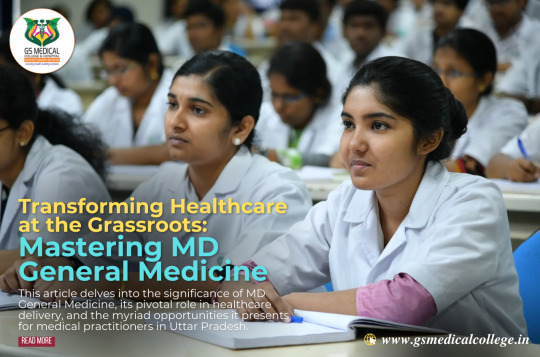
Aspiring doctors keen on effecting substantial change in healthcare often pursue MD General Medicine to gain the expertise needed to revolutionize healthcare delivery at the grassroots level.
This article delves into the significance of MD General Medicine, its pivotal role in healthcare delivery, and the myriad opportunities it presents for medical practitioners in Uttar Pradesh.
Unveiling the Realm of MD General Medicine
Comprehensive Training: MD General Medicine programs stand as bastions of comprehensive medical education, immersing students in diverse medical disciplines. From cardiology to pulmonology, gastroenterology to nephrology, endocrinology to infectious diseases, these programs offer a holistic approach to medical training. Students are equipped with the skills to adeptly diagnose and manage a wide array of acute and chronic medical conditions. Moreover, they learn to develop tailored treatment plans and provide compassionate, patient-centered care.
Skill Development: Central to MD General Medicine programs is the cultivation of essential skills crucial for successful medical practice. Through hands-on clinical experience, students hone their diagnostic abilities, refine their clinical reasoning, and master the art of evidence-based decision-making. Furthermore, they develop proficiency in interpreting diagnostic tests, conducting physical examinations, and administering appropriate medical interventions.
Interdisciplinary Approach: MD General Medicine emphasizes an interdisciplinary approach to patient care, recognizing the interconnectedness of various medical specialties. Students engage in collaborative learning experiences, working alongside specialists from diverse fields to address complex medical cases comprehensively. This interdisciplinary exposure fosters a holistic understanding of patient care and cultivates effective communication and teamwork skills essential for navigating today's healthcare landscape.
Research and Innovation: At the forefront of MD General Medicine is a culture of research and innovation aimed at advancing medical knowledge and improving patient outcomes. Students are encouraged to participate in research projects, clinical trials, and scholarly activities to explore emerging trends in medicine and contribute to the ever-expanding body of medical literature. Moreover, they gain exposure to cutting-edge technologies and innovative medical therapies, preparing them to embrace the rapid advancements shaping modern healthcare delivery.
Specialization Opportunities: While MD General Medicine provides a robust foundation in internal medicine, it also opens doors to a myriad of specialization opportunities. Through fellowship programs, students can delve deeper into subspecialties such as cardiology, gastroenterology, rheumatology, neurology, and oncology. These pathways enable physicians to focus their expertise on specific areas of interest or pursue super-specialization, enhancing their proficiency and efficacy in delivering specialized medical care.
Specialization Opportunities: While MD General Medicine provides a robust foundation in internal medicine, it also opens doors to a myriad of specialization opportunities. Through fellowship programs, students can delve deeper into subspecialties such as cardiology, gastroenterology, rheumatology, neurology, and oncology. These pathways enable physicians to focus their expertise on specific areas of interest or pursue super-specialization, enhancing their proficiency and efficacy in delivering specialized medical care.
Continuing Education and Professional Development: MD General Medicine programs are committed to fostering lifelong learning and professional growth among physicians. Through continuing medical education (CME) activities, conferences, and workshops, students have access to ongoing opportunities for skill enhancement, knowledge acquisition, and networking with peers and experts in the field. This commitment to continuous education ensures that physicians remain abreast of the latest advancements in medicine and maintain the highest standards of clinical practice throughout their careers.
Impact on Healthcare Delivery: The impact of MD General Medicine extends far beyond the confines of academic institutions, significantly influencing healthcare delivery on a global scale. Physicians trained in MD General Medicine are equipped to address the growing complexity of healthcare challenges, ranging from the rising prevalence of chronic diseases to the emergence of novel infectious pathogens. Their comprehensive training and interdisciplinary approach to patient care enable them to navigate multifaceted medical cases with proficiency and compassion, thereby improving patient outcomes and enhancing the overall quality of healthcare delivery.
In essence, MD General Medicine serves as a cornerstone of medical education, empowering physicians with the knowledge, skills, and expertise needed to navigate the complexities of modern healthcare delivery effectively. Through comprehensive training, interdisciplinary collaboration, and ongoing professional development, MD General Medicine programs prepare physicians to make meaningful contributions to patient care, medical research, and healthcare innovation, ultimately shaping the future of medicine for generations to come.
Empowering Healthcare Delivery: The Role of MD General Medicine
Primary Care Providers: MD General Medicine specialists serve as linchpins in the healthcare system, assuming the role of primary care providers for diverse patient populations. With their broad knowledge base and comprehensive training, these specialists offer holistic medical care to individuals of all ages, from infants to the elderly. By emphasizing preventive healthcare, health promotion, and disease prevention, they play a pivotal role in fostering community wellness and reducing the burden of preventable illnesses. Through regular screenings, vaccinations, and health education initiatives, MD General Medicine specialists strive to identify and mitigate health risks early, promoting a proactive approach to healthcare delivery.
Comprehensive Disease Management: One of the hallmark responsibilities of MD General Medicine specialists is the management of complex medical conditions across the continuum of care. These specialists excel in diagnosing and treating a myriad of acute and chronic health concerns, ranging from respiratory infections to autoimmune disorders. With their expertise in internal medicine, they adeptly navigate the intricacies of multisystem diseases, coordinating care with specialists from various disciplines to ensure comprehensive treatment plans. Moreover, MD General Medicine specialists play a pivotal role in optimizing medication regimens, monitoring disease progression, and mitigating treatment-related complications, thereby enhancing patient outcomes and quality of life.
Coordination of Care: MD General Medicine specialists serve as pivotal orchestrators of patient care, facilitating seamless coordination among healthcare providers and interdisciplinary teams. They collaborate closely with specialists, allied health professionals, and support staff to deliver integrated, patient-centered care that addresses the unique needs and preferences of each individual. Through effective communication, care coordination meetings, and shared decision-making processes, MD General Medicine specialists ensure continuity of care across different healthcare settings, from outpatient clinics to hospital wards. By fostering strong partnerships and promoting collaboration among healthcare stakeholders, they enhance care coordination, minimize gaps in treatment, and optimize healthcare delivery outcomes.
Patient Advocacy and Education: Beyond the realms of clinical practice, MD General Medicine specialists serve as advocates for patient rights, health equity, and access to quality healthcare services. They empower patients to take an active role in their healthcare journey by providing comprehensive medical information, explaining treatment options, and fostering shared decision-making processes. Through patient education initiatives, support groups, and community outreach programs, MD General Medicine specialists promote health literacy, disease awareness, and self-management skills among individuals and families. By empowering patients to make informed decisions about their health and well-being, they contribute to improved health outcomes, reduced healthcare disparities, and enhanced patient satisfaction.
Research and Innovation: MD General Medicine specialists are at the forefront of medical research and innovation, driving advancements in clinical practice, healthcare policy, and medical education. Through scholarly inquiry, clinical trials, and quality improvement projects, they generate new knowledge, refine diagnostic algorithms, and develop evidence-based guidelines for optimal patient care. Moreover, MD General Medicine specialists leverage technological innovations and digital health solutions to enhance care delivery, streamline workflows, and improve patient outcomes. By embracing a culture of innovation and continuous learning, they shape the future of healthcare delivery, pioneering novel approaches to disease management, and healthcare optimization.
MD General Medicine specialists play a multifaceted role in healthcare delivery, serving as primary care providers, disease management experts, care coordinators, patient advocates, and champions of innovation. Through their comprehensive training, clinical expertise, and dedication to patient-centered care, they drive positive change in healthcare systems worldwide, improving access to quality care, enhancing health outcomes, and promoting wellness across diverse communities.
Exploring Opportunities for MD General Medicine Practitioners in Uttar Pradesh
Growing Demand in a Dynamic Landscape: Uttar Pradesh, India's most populous state, presents a dynamic healthcare landscape characterized by diverse healthcare needs and evolving demographic trends. In this context, MD General Medicine practitioners are poised to play a pivotal role in addressing the growing demand for comprehensive medical care across the state. With a burgeoning population and a significant prevalence of chronic diseases, there is an increasing need for skilled physicians capable of delivering high-quality healthcare services. This demand is particularly pronounced in underserved rural areas and densely populated urban centers, where access to medical care remains a pressing challenge. By leveraging their expertise in internal medicine, MD General Medicine practitioners can make a meaningful impact on public health outcomes, improve healthcare access, and enhance the overall well-being of communities across Uttar Pradesh.
Career Advancement and Professional Growth: Graduates of MD General Medicine programs, the best Medical PG Institutes in UP India like GS Medical College and Hospital, are well-equipped to embark on diverse career pathways and pursue opportunities for professional advancement in Uttar Pradesh's healthcare sector. These practitioners possess a comprehensive understanding of internal medicine principles, diagnostic methodologies, and therapeutic interventions, positioning them as valuable assets in various healthcare settings. Whether aspiring to specialize in hospital medicine, academic medicine, private practice, research, public health, or healthcare administration, MD General Medicine practitioners have abundant avenues for career development and leadership roles. With their strong foundation in clinical practice, research acumen, and commitment to patient-centered care, they can drive innovation, foster interdisciplinary collaboration, and spearhead initiatives to improve healthcare delivery outcomes across the state.
Fostering Collaborative Partnerships: In Uttar Pradesh's vibrant healthcare ecosystem, MD General Medicine practitioners have the opportunity to foster collaborative partnerships with government agencies, non-profit organizations, community health centers, and other stakeholders to address emerging health challenges and promote population health. By participating in health outreach programs, community health screenings, and disease prevention initiatives, they can proactively identify health disparities, advocate for equitable healthcare access, and implement targeted interventions to mitigate disease burden. Moreover, through interdisciplinary collaborations with specialists, allied health professionals, and grassroots organizations, MD General Medicine practitioners can leverage collective expertise, resources, and best practices to enhance healthcare delivery models, optimize clinical outcomes, and promote sustainable health systems strengthening initiatives.
Harnessing Technological Innovations: In an era defined by rapid technological advancements and digital transformation, MD General Medicine practitioners in Uttar Pradesh have the opportunity to harness innovative technologies and digital health solutions to revolutionize patient care delivery, here is the List of PG Medical Colleges in Uttar Pradesh 2024. By integrating telemedicine platforms, electronic health records, mobile health applications, and remote monitoring devices into their practice, they can overcome geographical barriers, expand access to healthcare services, and enhance patient engagement and adherence to treatment regimens. Additionally, by leveraging data analytics, artificial intelligence, and machine learning algorithms, MD General Medicine practitioners can gain actionable insights into population health trends, personalize treatment approaches, and optimize resource allocation to maximize healthcare efficiency and effectiveness.
Educational Advocacy and Mentorship: As leaders in the medical community, MD General Medicine practitioners in Uttar Pradesh have a unique opportunity to advocate for medical education reforms, mentor aspiring healthcare professionals, and inspire the next generation of physicians. By actively participating in medical education programs, residency training initiatives, and continuing medical education seminars, they can impart valuable clinical knowledge, share practical insights, and instill a culture of lifelong learning among medical students, residents, and junior faculty members. Moreover, by serving as mentors, preceptors, and role models, they can nurture talent, cultivate leadership skills, and foster a culture of excellence and professionalism in the medical fraternity, ensuring a legacy of compassionate care and clinical excellence for years to come.
Uttar Pradesh offers a myriad of opportunities for MD General Medicine practitioners to make a meaningful impact on healthcare delivery, professional growth, and community well-being. By embracing these opportunities, collaborating with stakeholders, harnessing technological innovations, and advocating for educational excellence, MD General Medicine practitioners can contribute to a healthier, more resilient, and equitable healthcare system in Uttar Pradesh and beyond.
Conclusion:
MD General Medicine plays a pivotal role in transforming healthcare at the grassroots level, addressing the diverse medical needs of communities and populations. Aspiring physicians who embark on the journey of mastering MD General Medicine acquire the knowledge, skills, and expertise needed to provide compassionate, evidence-based medical care. Top Medical Colleges in UP for PG at GS Medical College and Hospital, MD General Medicine students receive comprehensive training, mentorship, and opportunities for professional growth, preparing them for fulfilling careers as healthcare leaders and advocates. If you aspire to make a difference in healthcare and contribute to the well-being of individuals and communities, consider pursuing MD General Medicine at GS Medical College and Hospital where excellence in medical education meets a commitment to compassionate patient care.
#MDinGeneralMedicine hashtag#GeneralMedicine hashtag#GSMedicalCollege hashtag#DelhiNCR hashtag#Ghaziabad hashtag#UttarPradesh hashtag#India
0 notes
Text
Breaking Boundaries: How Interdisciplinary Learning is Shaping the Future of Schools
In an era characterized by rapid advancements and interconnected global challenges, the traditional compartmentalization of knowledge into distinct subject areas is indeed becoming increasingly obsolete. Recognizing the limitations of this siloed approach, educators are championing interdisciplinary learning as a transformative pedagogical strategy to prepare students for the multifaceted demands of the 21st century. This article delves into the pivotal role of interdisciplinary learning in shaping the future of schools and empowering students to become versatile thinkers and problem solvers.
Embracing Interdisciplinary Learning:
Interdisciplinary learning marks a departure from the conventional method of education, where subjects are often taught in isolation. Instead, it encourages the integration of multiple disciplines to explore complex topics and real-world problems from a holistic perspective. By dismantling traditional boundaries, interdisciplinary learning empowers students to make connections across various fields of study, fostering a more comprehensive understanding of the interconnectedness of knowledge. In schools adopting interdisciplinary approaches, students are not confined to the confines of individual subjects but are encouraged to explore the synergies between different disciplines, thus gaining a deeper insight into the complexities of the world around them.
Fostering Critical Thinking and Creativity:
A fundamental advantage of interdisciplinary learning lies in its capacity to nurture critical thinking and creativity among students. By examining topics from diverse perspectives and drawing upon insights from various disciplines, students are challenged to think critically, analyze information, and devise innovative solutions to complex problems. Interdisciplinary learning cultivates an environment where students are encouraged to approach challenges with an open mind, viewing ambiguity and uncertainty as opportunities for exploration and discovery rather than obstacles. Through interdisciplinary projects and discussions, students learn to appreciate the richness of diverse viewpoints, fostering a culture of intellectual curiosity and creativity within the school community.
Moreover, interdisciplinary learning equips students with the skills and competencies necessary to thrive in an increasingly interconnected and dynamic world. As students engage in collaborative projects that span multiple disciplines, they develop essential skills such as communication, collaboration, and adaptability. These skills are invaluable in navigating the complexities of the modern workforce, where interdisciplinary collaboration is the norm rather than the exception. By fostering a culture of collaboration and teamwork, interdisciplinary learning prepares students to excel in diverse professional settings and contribute meaningfully to addressing complex global challenges.
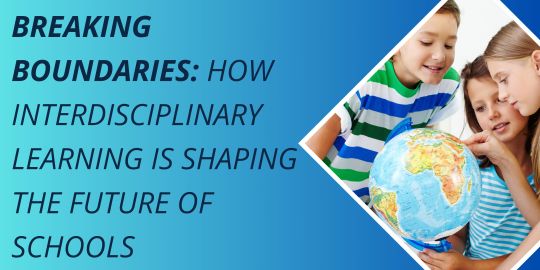
Promoting Collaboration and Communication:
Interdisciplinary learning stands as a fertile ground for fostering collaboration and enhancing communication skills among students. By bringing together individuals from diverse backgrounds and perspectives, interdisciplinary projects offer invaluable opportunities for students to collaborate on complex challenges. Through collaborative endeavours and discussions, students learn to communicate effectively, negotiate differences, and capitalize on each other's strengths to achieve shared objectives. This collaborative ethos not only cultivates a sense of teamwork but also fosters a deeper appreciation for the diverse perspectives present within the learning community. In interdisciplinary learning environments, all voices are valued, and contributions are recognized, creating a culture of inclusivity and respect where students feel empowered to share their ideas and perspectives without fear of judgment.
Preparing Students for the Complexities of the Modern World:
In today's rapidly evolving world, characterized by unprecedented levels of complexity and uncertainty, the ability to navigate change and tackle multifaceted challenges is indispensable. Interdisciplinary learning equips students with the skills and competencies needed to thrive in diverse professional environments and address the complexities of the modern world. By integrating multiple disciplines, interdisciplinary learning encourages students to approach problems with flexibility and creativity, transcending traditional disciplinary boundaries to develop innovative solutions. Moreover, interdisciplinary learning prepares students to collaborate effectively in an interconnected world, where the ability to work across disciplines and leverage diverse perspectives is essential for success. By fostering adaptability, critical thinking, and collaboration, interdisciplinary learning empowers students to navigate the complexities of the modern world with confidence and resilience, positioning them to make meaningful contributions to society and effect positive change in their communities and beyond.
Empowering Students as Lifelong Learners: Beyond preparing students for specific careers or fields of study, interdisciplinary learning instils a passion for lifelong learning. By engaging with diverse perspectives and exploring interconnected themes, students develop a curiosity and thirst for knowledge that extends far beyond the classroom. Moreover, interdisciplinary learning encourages students to embrace intellectual curiosity and pursue learning opportunities outside of traditional academic boundaries.
Conclusion:
Interdisciplinary learning is a transformative educational philosophy that transcends the conventional boundaries of subject-specific teaching. In schools in Dubai, where diversity is celebrated and global perspectives are valued, embracing interdisciplinary learning becomes particularly relevant. By integrating knowledge and perspectives from various disciplines, such as science, mathematics, humanities, and the arts, students in Dubai can gain a holistic understanding of complex real-world issues.
Through interdisciplinary learning, students have the opportunity to engage in meaningful exploration and inquiry-driven investigations that mirror the complexities of the modern world. For example, a project on sustainable development may involve elements of environmental science, economics, social studies, and urban planning. By examining the issue from multiple angles, students develop a deeper appreciation for the interconnectedness of environmental, economic, and social factors, preparing them to address complex challenges with a comprehensive understanding.
Moreover, interdisciplinary learning fosters essential skills such as critical thinking, collaboration, and communication, which are highly valued in today's interconnected and rapidly changing world. Students learn to approach problems with an open mind, analyze information critically, and communicate their ideas effectively to diverse audiences. By collaborating with peers from different backgrounds and perspectives, students in Dubai develop cultural competence and learn to appreciate diverse viewpoints, fostering a sense of inclusivity and respect within the classroom and beyond.
Furthermore, interdisciplinary learning nurtures a growth mindset and a passion for lifelong learning. By engaging with diverse perspectives and exploring interconnected themes, students develop a curiosity and thirst for knowledge that extends far beyond the classroom. They learn to embrace intellectual curiosity and seek out learning opportunities in various contexts, preparing them to adapt to new challenges and opportunities throughout their lives.
0 notes
Text
Introduction:
Durgapur Hospital, a cornerstone of healthcare in the region, seeks to elevate its services to better serve the community. By implementing innovative techniques, the hospital can enhance efficiency, patient satisfaction, and overall performance. This article delves into five secret techniques that can revolutionize Durgapur Hospital's operations and elevate its status as a leading healthcare provider.
Leveraging Technology for Streamlined Operations:
Incorporating cutting-edge technology can significantly enhance the hospital's operational efficiency. Implementing a comprehensive Hospital Information System (HIS) can streamline administrative tasks, digitize patient records, and facilitate seamless communication among departments. By integrating electronic health records (EHRs), physicians can access patient information instantaneously, leading to quicker diagnoses and better-informed treatment decisions. Additionally, leveraging telemedicine solutions can extend the hospital's reach to remote areas, enabling patients to receive consultations and follow-ups without geographical constraints.
Prioritizing Patient-Centered Care:
Shifting towards a patient-centered care approach can foster a culture of empathy and compassion within Durgapur Hospital. Empowering patients through education and involvement in treatment decisions fosters trust and improves overall satisfaction. Implementing initiatives such as patient advocacy programs, where dedicated staff members assist patients in navigating their healthcare journey, can enhance communication and ensure that patients' needs are met promptly. Moreover, establishing feedback mechanisms, such as suggestion boxes or online surveys, allows patients to voice their concerns and suggestions, facilitating continuous improvement.
Enhancing Staff Training and Development:
Investing in staff training and development is crucial for maintaining high standards of care and professionalism. Providing ongoing education opportunities, such as workshops, seminars, and certification programs, equips healthcare professionals with the latest knowledge and skills. Additionally, fostering a culture of collaboration and interdisciplinary teamwork encourages staff members to share best practices and learn from each other's experiences. Recognizing and rewarding excellence through performance incentives and employee recognition programs boost morale and motivation, leading to a more engaged workforce dedicated to delivering exceptional care.
Implementing Data-Driven Decision-Making:
Harnessing the power of data analytics can provide valuable insights into Durgapur Hospital's operations and patient outcomes. By collecting and analyzing key performance indicators (KPIs), such as patient wait times, readmission rates, and treatment outcomes, hospital administrators can identify areas for improvement and allocate resources effectively. Real-time monitoring of KPIs enables proactive intervention to address issues promptly and optimize resource utilization. Furthermore, leveraging predictive analytics can forecast future healthcare trends, allowing the hospital to adapt its strategies accordingly and stay ahead of the curve.
Cultivating Community Engagement and Partnerships:
Building strong ties with the local community and forging strategic partnerships can amplify Durgapur Hospital's impact and reach. Collaborating with local government agencies, non-profit organizations, and community leaders can facilitate access to resources and support initiatives aimed at promoting public health and wellness. Hosting health awareness campaigns, free screenings, and vaccination drives not only raise awareness but also foster goodwill and trust within the community. Additionally, forging partnerships with academic institutions and research organizations can drive innovation and facilitate knowledge exchange, positioning Durgapur Hospital as a center of excellence in healthcare delivery and research.
Conclusion:
Incorporating these five secret techniques can propel Durgapur Hospital towards excellence in healthcare delivery. By leveraging technology, prioritizing patient-centered care, investing in staff training, embracing data-driven decision-making, and cultivating community engagement, the hospital can enhance its operational efficiency, improve patient outcomes, and solidify its position as a trusted healthcare provider in the region. Through continuous innovation and a commitment to excellence, Durgapur Hospital can fulfill its mission of providing quality care to the community it serves.
0 notes
Text
What is the future of graphic designers?
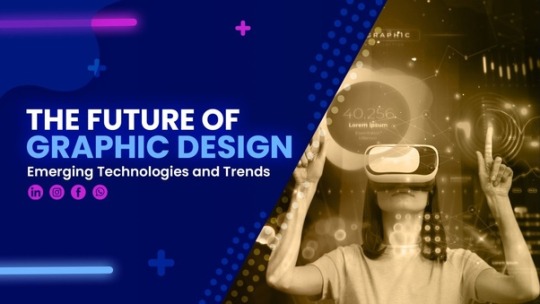
Title: Navigating the Future: The Evolution of Graphic Designers At Aarvy Edutech
With visuals ruling communication, graphic design is becoming even more important. The way graphic designers work is about to change dramatically as technology advances, people's preferences shift, and new design styles become popular. This blog will explore what the future holds for graphic designers, including the challenges they'll face, the new possibilities that await them, and the design trends that will shape their work.
The Fusion of Creativity and Technology:
One of the most prominent trends shaping the future of graphic design is the fusion of creativity with cutting-edge technology. With the rise of AI-powered design tools and augmented reality (AR) experiences, designers are empowered to push the boundaries of their creativity like never before. AI algorithms can analyse data to inform design decisions, streamline repetitive tasks, and even generate preliminary design concepts. While some may fear that AI will replace human designers, the reality is quite the opposite. Instead of rendering designers obsolete, AI serves as a powerful tool to enhance their capabilities, allowing them to focus on higher-level creative tasks and strategic thinking.
2. Embracing Sustainability and Ethical Design:
The growing emphasis on sustainability and social responsibility demands a shift in graphic design. Designers must prioritise eco-friendly materials and promote diversity and inclusion within their creations. This ethical and sustainable approach empowers them to be agents of positive change, shaping a brighter future.
3. Adapting to Evolving Design Trends:
As consumer preferences evolve, so too must the design trends that shape our visual landscape. In the future, graphic designers will need to stay attuned to emerging design trends and cultural shifts to remain relevant and competitive in the industry. From minimalist design aesthetics to bold typography and immersive multimedia experiences, the palette of design possibilities is vast and ever-changing. Flexibility, adaptability, and a willingness to experiment will be essential traits for graphic designers navigating the dynamic terrain of design trends.
4. Collaboration and Interdisciplinary Skills:
The future of graphic design is all about teamwork! To solve complex design problems, designers will be working alongside experts like UX specialists, content planners, and data analysts. This means being a great communicator and collaborator. Even better, if designers can understand how design connects with other fields like tech, marketing, and even psychology, they'll be superstars at creating fresh ideas that truly connect with people.
5. The Rise of Remote and Freelance Work:
The traditional model of graphic design employment is giving way to a more decentralised and flexible work landscape. As technology enables seamless collaboration across geographical boundaries, many graphic designers are opting for remote or freelance work arrangements. This shift towards remote work offers designers greater freedom and autonomy over their schedules, allowing them to pursue projects that align with their interests and values. However, it also presents challenges in terms of maintaining work-life balance, fostering team cohesion, and navigating the complexities of freelance entrepreneurship.
#graphic design#future of graphic#graphic#best course#upcoming#10 year#digital marketing#programming#coding#tumblr milestone
0 notes
Text
From South Africa to Swabia: university project tracks global supply chains
In an exciting initiative to bring academic theories into real-world practice, a university has teamed up with its international partner to create a dynamic global supply chain. This project, designed to simulate actual supply and production networks, has provided students from two universities with a practical arena to engage in interdisciplinary, international, and intercultural teamwork.

Throughout a project week in Cape Town, students utilized a production site to collaborate as suppliers and manufacturers. They were tasked with establishing crucial components like a data transfer system employing cloud solutions for customer orders and delivery bills and automated order processing through robotic process automation.
The project's highlight was setting up a global value creation network where students could monitor product transportation using advanced tracking technology supplied by a partner company. This allowed for real-time visibility of the shipments, which not only enhanced production planning but also significantly improved efficiency and collaboration within the supply chain.
Such educational projects exemplify how theoretical knowledge can be applied in practical settings, providing students with invaluable insights and experience in managing complex global supply chains effectively.
0 notes
Text
How Business Case Study Enhances Research Experience of a Student?
Service situation research studies are very useful devices for trainees looking for to boost their research study experience in a number of methods. Business case studies are invaluable tools for students seeking to enhance their research experience in several ways. Here's how:
Real-World Application: Situation researches supply trainees with real-world situations permitting them to use academic expertise to functional scenarios. This application-oriented strategy bridges the void in between scholastic knowing as well as real-life organization obstacles.
Critical Thinking and Problem-Solving Skills: Analyzing study calls for trainees to believe seriously as well as fix complicated issues. They need to recognize vital concerns assess different choices, plus suggest reliable options.
Multidisciplinary Learning: Business case study help often involve multiple disciplines such as marketing, finance, operations, and human resources. Investigating these instances subjects pupils to a varied series of subjects motivating interdisciplinary knowing.
Practical Research Skills: Study mandates extensive research study to collect appropriate information, evaluate info, and also attract informative final thoughts. Trainees find out to carry out qualitative and also measurable study make use of numerous information evaluation devices and also translate searching efficiently.
Teamwork and Communication: Many case studies are tackled within group settings, fostering teamwork and collaboration. Dealing with peers allows pupils to trade concepts, discussion viewpoints, plus jointly address troubles.
Ethical Considerations: Business case studies often present ethical dilemmas or moral ambiguities, prompting students to contemplate the ethical implications of various decisions. Getting involved in with such circumstances urges moral thinking as well as promotes a feeling of duty in study conduct. Pupils find out to browse moral intricacies making sure honesty as well as integrity in their research study ventures.
Continuous Learning and Adaptability: The service landscape is frequently progressing offering brand-new difficulties plus chances. Study show this vibrant nature of service subjecting pupils to varied situations plus developing patterns.

1 note
·
View note
Text
Dr. Mary Suja Sukumar is speaking about Enhancing Communication skills for Patient Transporters Through Simulation-based training at the 14IHNPUCG.
Effective communication is the cornerstone of quality healthcare delivery. Among the various roles within a healthcare setting, patient transporters play a crucial part in ensuring the safe and efficient movement of patients. Despite their significant role, the importance of their communication skills is often underestimated. Enhancing these skills can greatly improve patient safety, satisfaction, and overall healthcare efficiency. One innovative approach to achieving this is through simulation-based training.
We are happy to introduce our new speaker Dr. Mary Suja Sukumar
She will be presenting her Speaker session on “Enhancing Communication Skills for Patient Transporters Through Simulation-based Training”
Register now: https://nursing.universeconferences.com/registration/
Connect with us virtually: https://nursing.universeconferences.com/virtual-registration/
The Role of Patient Transporters
Patient transporters are responsible for moving patients between different departments within a hospital, such as from a ward to a diagnostic imaging unit or from the emergency room to an operating theater. During these movements, transporters interact with patients, their families, and healthcare professionals. Effective communication is vital for:
Ensuring Patient Safety: Clear communication helps prevent errors such as transporting the wrong patient or moving a patient who is not ready.
Providing Comfort and Reassurance: Patients may feel anxious or uncomfortable during transport. Compassionate and clear communication can alleviate their fears.
Coordinating with Healthcare Teams: Transporters must effectively communicate with nurses, doctors, and other staff to ensure timely and accurate patient transfers.
The Benefits of Simulation-Based Training
Simulation-based training provides a controlled and immersive environment where patient transporters can practice and enhance their communication skills. Here are some key benefits:
Realistic Scenarios: Simulations can mimic real-life situations transporters might face, from routine patient transfers to emergency evacuations. This allows transporters to experience and manage various scenarios in a risk-free setting.
Immediate Feedback: Trainers can provide instant feedback on communication techniques, helping transporters understand their strengths and areas for improvement.
Building Confidence: Repeated practice in a simulated environment can build confidence, making transporters more adept at handling real-world interactions.
Interdisciplinary Collaboration: Simulation training often involves role-playing with other healthcare professionals, promoting better teamwork and understanding across different roles.
Key Elements of Effective Simulation-Based Training
For simulation-based training to be effective, certain elements should be incorporated:
Scenario Diversity: Training should cover a wide range of scenarios, including routine patient transfers, dealing with agitated or non-communicative patients, and managing communication during emergencies.
Role-Playing: Participants should engage in role-playing exercises, taking turns as patients, family members, and healthcare professionals to gain different perspectives.
Feedback and Reflection: Structured feedback sessions should follow each simulation exercise, allowing transporters to reflect on their performance and identify areas for improvement.
Incorporation of Technology: Utilizing advanced simulation tools, such as high-fidelity mannequins and virtual reality, can enhance the realism and effectiveness of the training.
Implementing Simulation-Based Training
Assessment of Needs: Begin by assessing the specific communication challenges faced by patient transporters in your facility. This can be done through surveys, interviews, and observation.
Curriculum Development: Develop a training curriculum that addresses identified needs and incorporates diverse scenarios, role-playing, and technology.
Training the Trainers: Ensure that trainers are well-equipped to conduct simulation-based training. This includes understanding how to provide constructive feedback and facilitate reflective discussions.
Pilot Testing and Evaluation: Start with a pilot program to test the effectiveness of the training. Gather feedback from participants and make necessary adjustments before a full-scale rollout.
Continuous Improvement: Regularly update the training program based on feedback, technological advancements, and evolving communication challenges.
Conclusion
Enhancing the communication skills of patient transporters through simulation-based training can significantly impact patient safety, satisfaction, and overall healthcare efficiency. By providing a realistic, interactive, and supportive learning environment, simulation training equips transporters with the necessary skills to perform their roles more effectively. Investing in this type of training reflects a commitment to quality care and recognizes the vital role of patient transporters within the healthcare team.
0 notes
Text
Fellowship in Critical Care in India and Online Fellowship in Intensive Care Medicine
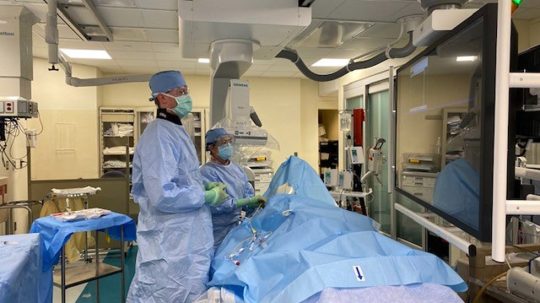
In the dynamic landscape of healthcare, the demand for specialized medical professionals, particularly in critical care, is ever-increasing. Recognizing this need, fellowship programs in critical care have emerged as invaluable avenues for healthcare practitioners seeking to enhance their skills and knowledge in managing critically ill patients. In India, as well as globally, these programs serve as pillars of expertise, fostering the development of competent intensivists capable of providing high-quality care in intensive care units (ICUs) across diverse healthcare settings.
Understanding Fellowship in Critical Care in India
Fellowship programs in critical care in India are structured postgraduate courses designed to equip medical graduates with comprehensive skills and expertise in managing critically ill patients. These programs typically span one to two years, during which fellows undergo rigorous training encompassing various aspects of critical care medicine. The curriculum often includes didactic lectures, clinical rotations in ICUs, hands-on procedural training, and research opportunities, all under the guidance of experienced intensivists.
The objectives of fellowship programs in critical care in India are multifaceted. Firstly, they aim to cultivate a deep understanding of critical illness pathophysiology, including respiratory, cardiovascular, neurological, and renal dysfunctions, among others. Secondly, fellows learn advanced life support techniques, invasive procedures such as intubation and central line placements, and the management of complex medical emergencies. Additionally, emphasis is placed on interdisciplinary teamwork, communication skills, ethical considerations, and end-of-life care in critical care settings.
The Rise of Online Fellowship in Intensive Care Medicine
With the advent of technology and the global connectivity afforded by the internet, online fellowship programs in intensive care medicine have gained traction in recent years. These programs offer a flexible and accessible alternative to traditional, in-person fellowships, particularly advantageous for healthcare professionals balancing clinical responsibilities with academic pursuits or residing in geographically remote areas.
Online fellowship in intensive care medicine leverages various digital platforms and educational resources to deliver a comprehensive curriculum comparable to its offline counterparts. Through live webinars, virtual case discussions, interactive modules, and simulation-based training, participants gain theoretical knowledge and practical skills essential for managing critically ill patients. Moreover, online forums and discussion boards facilitate peer-to-peer learning and collaboration among participants from diverse geographical locations.
Bridging the Gap: Offline and Online Fellowship Integration
While traditional fellowship programs in critical care provide invaluable hands-on experience and direct patient care opportunities, online fellowships offer flexibility and accessibility, catering to a broader audience of healthcare professionals. Recognizing the complementary nature of these approaches, some institutions have begun integrating offline and online components into hybrid fellowship models.
In hybrid fellowship programs, participants benefit from a blend of in-person clinical rotations in ICUs, procedural training, and face-to-face interactions with mentors, augmented by online lectures, virtual simulations, and remote mentorship. This hybrid approach combines the strengths of both offline and online modalities, fostering a well-rounded learning experience that transcends geographical boundaries and enhances accessibility without compromising on quality.
The Impact and Future of Fellowship in Critical Care
The significance of online fellowship programs in critical care, both in India and globally, cannot be overstated. As the complexity of critical illness continues to evolve, the role of intensivists becomes increasingly indispensable in delivering optimal patient outcomes. Fellowship-trained intensivists possess the expertise, confidence, and interdisciplinary collaboration skills necessary to navigate the intricacies of modern ICUs and address the diverse needs of critically ill patients.
Looking ahead, the future of fellowship in critical care is poised for innovation and expansion. Advances in medical education, technology, and healthcare delivery will continue to shape the landscape of intensive care medicine education, offering new avenues for learning, collaboration, and professional development. Whether through traditional offline programs, online fellowships, or hybrid models, the pursuit of excellence in critical care remains paramount, driven by a shared commitment to advancing patient care and improving clinical outcomes.
0 notes
Text
The Power of Collaboration: Partnering for Mutual Growth

In the fast-paced and interconnected business world, collaboration has emerged as a powerful strategy for driving innovation, expanding market reach, and fostering mutual growth. Rather than viewing competitors as adversaries, many companies embrace collaboration, recognizing the benefits of working together to achieve shared goals and objectives. In this blog post, we’ll explore the transformative power of collaboration, its advantages for businesses of all sizes, and strategies for building successful partnerships that drive mutual growth and success.
Embracing the Collaborative Mindset
Collaboration involves pooling resources, expertise, and networks to achieve common objectives and create shared value. Collaboration enables companies to leverage collective strengths, mitigate weaknesses, and capitalize on new opportunities, whether partnering with other businesses, industry stakeholders, or community organisations. By embracing a collaborative mindset, companies can break down silos, foster innovation, and unlock new avenues for growth and success.
Advantages of Collaboration for Businesses
Access to New Markets and Customers: Collaboration allows businesses to expand their reach and access new markets, customers, and distribution channels. By partnering with complementary businesses or entering into strategic alliances, companies can tap into existing networks and customer bases, accelerating growth and market penetration.
Shared Resources and Expertise: Collaborative partnerships enable companies to leverage shared resources, capabilities, and expertise to achieve common objectives more efficiently and cost-effectively. By pooling knowledge, technology, and talent, businesses can accelerate innovation, overcome challenges, and drive mutual growth.
Risk Mitigation and Resilience: Collaborative partnerships can help businesses mitigate risks and build resilience by diversifying revenue streams, sharing market insights, and leveraging collective resources. By spreading risk across multiple partners, companies can navigate market volatility and uncertainty more effectively, safeguarding against potential downturns or disruptions.
Innovation and Creativity: Collaboration fosters a culture of innovation and creativity by bringing together diverse perspectives, ideas, and skill sets. Businesses can generate fresh insights, spark creativity, and develop innovative solutions to complex challenges by encouraging cross-functional collaboration and interdisciplinary teamwork.
Enhanced Brand Image and Reputation: Collaborative partnerships can enhance a company’s brand image and reputation by associating it with trusted, reputable partners and aligning with shared values and goals. By demonstrating a commitment to collaboration and collective impact, businesses can enhance their credibility and trustworthiness and appeal to customers, investors, and stakeholders.
Strategies for Building Successful Collaborative Partnerships
Identify Shared Goals and Objectives: Identify shared goals, objectives, and areas of mutual interest with potential partners. Look for alignment in values, mission, and strategic priorities to ensure organisational compatibility and synergy.
Establish Clear Roles and Responsibilities: Define clear roles, responsibilities, and expectations for each partner within the collaboration. Establish open communication lines, decision-making processes, and conflict-resolution mechanisms to ensure transparency and accountability.
Build Trust and Mutual Respect: Cultivate trust, mutual respect, and rapport with your collaborative partners through open, honest communication and a commitment to integrity and professionalism. Invest time and effort in building strong relationships based on transparency, reliability, and shared values.
Communicate Effectively and Regularly: Maintain ongoing communication and collaboration with your partners throughout the partnership. Foster open dialogue, information sharing, and feedback exchange to facilitate alignment, coordination, and progress tracking.
Celebrate Successes and Learn from Challenges: Celebrate milestones, achievements, and successes achieved through collaboration, recognizing the contributions of each partner. Reflect on lessons learned from challenges or setbacks and use them as opportunities for growth, improvement, and innovation.
Conclusion
Collaboration is a powerful strategy for driving mutual growth, innovation, and success in today’s interconnected business landscape. By embracing a collaborative mindset, businesses can tap into new markets, leverage shared resources, and foster innovation to achieve shared goals and objectives. By building successful collaborative partnerships based on trust, mutual respect, and effective communication, companies can unlock new opportunities, overcome challenges, and create shared value that benefits all stakeholders. As businesses navigate the complexities of the modern marketplace, collaboration will remain a cornerstone strategy for driving sustainable growth and resilience in an ever-changing world.
0 notes